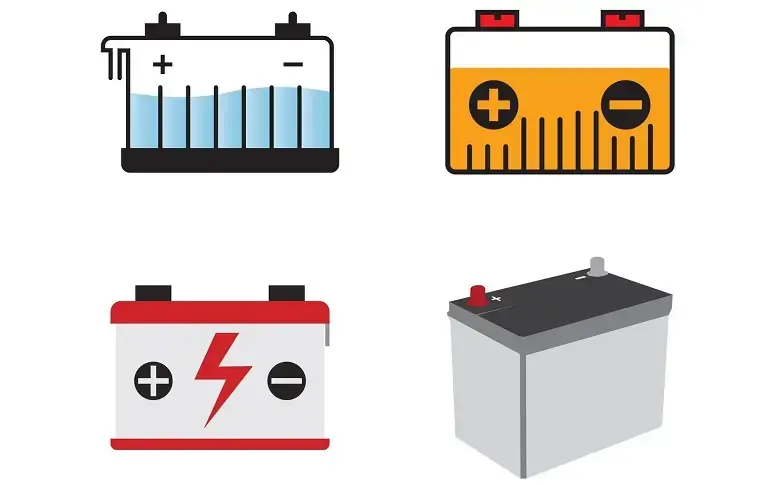How it is Made: Part XI – Lead Acid Battery Formation Process
Understanding the battery formation process is essential for anyone involved in manufacturing or using these batteries. Lead acid batteries play a crucial role in powering various applications. These batteries have been around for over a century, providing reliable energy storage solutions. The global market for lead acid batteries is expanding rapidly, projected to reach USD 75 billion by 2031.
This process involves specific steps that activate the battery’s components, ensuring optimal performance and longevity.
Mastering this process can enhance the efficiency and reliability of lead acid battery in diverse sectors.
Understanding Lead Acid Batteries

Components of Lead Acid Batteries
Lead Plates
Lead plates form the core of lead acid batteries. These plates consist of lead oxide and lead. Manufacturers coat these plates with materials like lead sulfate to boost battery output. The geometry and materials of these electrodes influence the battery’s chemistry and voltage. Lead plates submerged in an electrolyte solution facilitate essential chemical reactions.
Electrolyte Solution

The electrolyte in lead acid batteries contains a mixture of sulfuric acid and water. This solution plays a crucial role in enabling chemical reactions between the lead plates. Typically, the composition includes 65% water and 35% sulfuric acid. The reaction between lead and sulfuric acid produces lead sulfate layers. These layers are vital for the battery’s function.
Types of Lead Acid Batteries
Flooded Lead Acid Batteries
Flooded lead acid batteries represent the most traditional type. They have cells where the plates are fully immersed in liquid electrolyte. Users must regularly maintain them by adding water. Additionally, they provide reliable power but require careful handling to prevent spills.
Sealed Lead Acid Batteries
Sealed lead acid batteries offer a maintenance-free alternative. They use a valve-regulated design to prevent electrolyte leakage. The sealed construction makes them suitable for various applications. Additionally, users appreciate the convenience of not needing to add water. They deliver consistent output with minimal upkeep.
The Battery Formation Process

How the Battery is Formed
The plates enter an amorphous matter state once the curing and drying phases are complete. An appropriate forming process must transform the latter into active material.
The filling machine
A special filling machine dips the assembled batteries into a diluted sulfuric acid solution. After this, the batteries are connected to the rectifier. The rectifier pulls electrons from the positive plate. It then directs these electrons to the negative plate.
Chemical transformations during the battery forming process
There are two distinct chemical transformations during the forming process:
- Positive Plate: PbSO4 + 2H2O → PbO2 + H2SO4 + 2e- + 2H+
- Negative Plate: PbSO4 + 2e- + 2H+ → Pb + H2SO4
These chemical reactions take place on the respective plates during the formation of a lead-acid battery. The formation process is crucial because it conditions the electrodes, which directly affects the battery’s capacity and output characteristics.
In this system, the battery is placed on a specific support, but there is no control over its temperature. As a result, the active material can heat up significantly during the process. This excess heat can potentially damage the material, leading to reduced performance or failure. To prevent this, it is important to use low electric currents (amperages) during the formation process. While this helps to minimize the risk of damage, it also results in a longer charging cycle. The formation of lead sulfate layers is essential for the battery’s electrochemical reactions, as these layers contribute to the battery’s efficiency and overall performance.
Initial Preparation
Gathering Materials
You need specific materials to begin the battery formation. Gather lead plates, sulfuric acid, and distilled water. Ensure all materials meet quality standards to guarantee it’s optimal performance. Proper materials contribute to the efficiency and longevity of the battery.
Safety Precautions
Safety is extremely crucial during the process. Before starting, wear protective gear such as gloves and goggles to minimize risks. Additionally, ensure proper ventilation in the workspace so that you can avoid inhaling harmful fumes. Furthermore, follow all safety guidelines carefully to prevent accidents and injuries.
By taking these precautions, you create a safer working environment and reduce potential hazards.
Step-by-Step Battery Formation Process
Mixing the Electrolyte
Carefully mix the electrolyte with precision and accuracy to ensure proper battery function. When preparing the solution, combine sulfuric acid and distilled water in the correct proportions, following recommended guidelines. Typically, the mixture consists of 65% water and 35% sulfuric acid, which is essential for maintaining the right chemical balance. This solution effectively facilitates the necessary chemical reactions within the battery, allowing it to operate efficiently and reliably.
Filling the Battery Cells
Carefully fill the battery cells with the properly prepared electrolyte, making sure to follow safety guidelines. To achieve uniform functionality, ensure that each cell receives an equal amount of the solution. This precise distribution helps maintain consistent chemical reactions across all cells, which is essential for the battery’s overall efficiency. Ultimately, this step is vital for ensuring stable and reliable performance over time.
Charging the Battery
Charge the battery carefully using a controlled current to ensure optimal performance. Initially, the first charge activates the battery’s active materials, which is essential for establishing its capacity and efficiency. Meanwhile, closely monitor the charging process to avoid potential risks such as overcharging. By following these steps, you can enhance the battery’s longevity and maintain its efficiency.
Monitoring and Testing
Consistently monitor the battery throughout the entire formation process to ensure stability and efficiency. Additionally, conduct regular tests to thoroughly assess the battery’s performance. Pay close attention to any irregularities in voltage or capacity, as these could indicate potential issues. Additionally, if any problems arise, address them promptly to maintain optimal battery function and longevity.
Methods for Battery Formation
There are currently three main battery-forming systems: in the air, in the tank, and by recirculation.
Formation in the Air
Formation in the air involves exposing battery plates to air during the initial stages. This method of formation allows oxygen to interact with the lead plates, which facilitates the formation of lead sulfate layers crucial for the battery’s electrochemical reactions. These layers are necessary for efficient energy storage and discharge.
The process, by enhancing the formation of lead sulfate, ultimately improves the battery’s capacity and performance characteristics.
Due to its simplicity and effectiveness, this method is commonly employed by manufacturers.
To begin the process of filling the battery with electrolyte, it’s important to first determine the correct acid density. The electrolyte solution is typically based on sulfuric acid (H2SO4), which plays a vital role in the battery’s functionality. Care must be taken to minimize air formation within the battery to avoid inefficiencies. This can be achieved by reducing the counter-electromotive force (CEMF), the force that opposes the battery’s current.
To manage this, the formation cycle is divided into two phases:
- Battery Charge Phase: Initially, a very low-density electrolyte (1.100/1.110 kg/l) is used for charging, allowing for gradual activation of the battery’s components.
- Acid Change and Boosting: After the initial phase, the electrolyte density is increased to a higher range (1.270/1.300 kg/l), ensuring the battery operates effectively. The next step, the “boosting” cycle, ensures that the new electrolyte mixes well with the already active material in the battery, promoting optimal interaction and allowing the active material to store and release energy efficiently.
These controlled phases help the battery maintain efficiency, extend lifespan, and ensure that all components are properly activated for maximum performance.
Formation in the Tank
Formation in the tank occurs when battery plates are immersed in an electrolyte within a tank, providing a controlled environment for chemical reactions. Managing higher amounts of heat is essential to prevent the electrolyte’s density from fluctuating during the process. The tank setup ensures that the electrolyte remains at a consistent density, allowing for uniform oxidation and reduction reactions on the lead plates. These reactions form lead sulfate crystals, which are critical for the battery’s operation.
By the end of this formation process, the electrolyte reaches an initial density of around 1.270 to 1.300 kilograms per liter.
This density is optimal for the accumulator’s functioning, ensuring that the battery can store and discharge energy effectively.
The tank method not only guarantees uniformity in the formation process but also enhances the overall efficiency and longevity of the battery by maintaining consistent environmental conditions throughout the process.
Recirculating Formation
Recirculating formation uses a system that circulates the electrolyte, maintaining a consistent concentration of sulfuric acid. The circulation ensures uniform electrolyte distribution, which promotes even chemical reactions throughout the battery. This method prevents the buildup of lead sulfate in specific areas, ultimately enhancing the battery’s overall performance. Although this process requires specialized equipment, the significant benefits make it an attractive option for improving battery quality and efficiency.
In this system, the movement of the electrolyte fluid inside each battery cell plays a key role. It helps to control the temperature around the main working components of the battery more accurately while simultaneously checking the thickness of the electrolyte. This fluid is essential for carrying electric current, and by monitoring these factors, the system can adjust to changes during different stages of the battery’s cycle.
Temperature control is achieved by varying the density of the electrolyte fluid and using a control system. An additional mechanism for real-time temperature control of the circulating solution ensures optimal conditions during the active material-forming phase. This setup results in a shorter cycle time, improving the efficiency of the formation process.
Common Challenges and Solutions
Identifying Common Issues
Overcharging
Overcharging occurs whenever a battery receives more current than it can handle, ultimately leading to excessive heat generation. As a result, this heat can damage the internal components of the battery, eventually causing irreversible harm. Moreover, overcharging not only reduces the efficiency of the battery but also significantly shortens its lifespan.
To address this issue, it is important to monitor the charging process closely. For instance, using a charger with automatic shut-off features effectively ensures that the battery stops charging once it reaches full capacity. Consequently, this helps maintain battery health, thereby preventing overcharging and prolonging its lifespan. Additionally, regularly checking for signs of overcharging and using the right charger are key practices for maintaining consistently optimal battery performance.
Sulfation
Sulfation happens when lead sulfate crystals form on the battery plates. These crystals hinder the battery’s ability to hold a charge. Sulfation results from prolonged disuse or improper charging. Regular use and proper charging techniques prevent sulfation. Addressing sulfation early restores battery performance.
Solutions and Best Practices
Proper Charging Techniques
Specifically, proper charging techniques enhance battery life. Use a charger that matches the battery’s specifications. Avoid using chargers with higher voltage outputs. Charge the battery in a well-ventilated area. Additionally, ensure the charger has an automatic shut-off feature. Additionally, this feature prevents overcharging and overheating.
Maintenance Tips
Although, regular maintenance ensures optimal battery output. First, inspect the battery for any signs of damage or corrosion. Clean the terminals with a mixture of baking soda and water to prevent corrosion build-up. Additionally, ensure the battery remains fully charged during periods of disuse to prevent draining. Store the battery in a cool, dry place to avoid temperature extremes. By following these tips, you can extend the battery’s lifespan and maintain its efficiency.
Basically, lead acid battery formation process involves specific steps to activate the battery’s components, ensuring optimal performance and longevity. During formation, lead plates and electrolyte solutions undergo chemical reactions to form essential layers, which enhance the battery’s capacity and efficiency. Proper formation is critical in preventing issues like sulfation and overcharging. By following this guide, you can achieve successful battery formation, and regular maintenance and correct charging techniques will further extend the battery’s life. Additionally, always ensure a safe environment during the process to protect both yourself and the battery.
To stay updated with the latest developments in STEM research, visit ENTECH Online. This is our digital magazine for science, technology, engineering, and mathematics.
At ENTECH Online, you’ll find a wealth of information. We offer insights and resources to fuel your curiosity. Our goal is to inspire your passion for new scientific discoveries.






